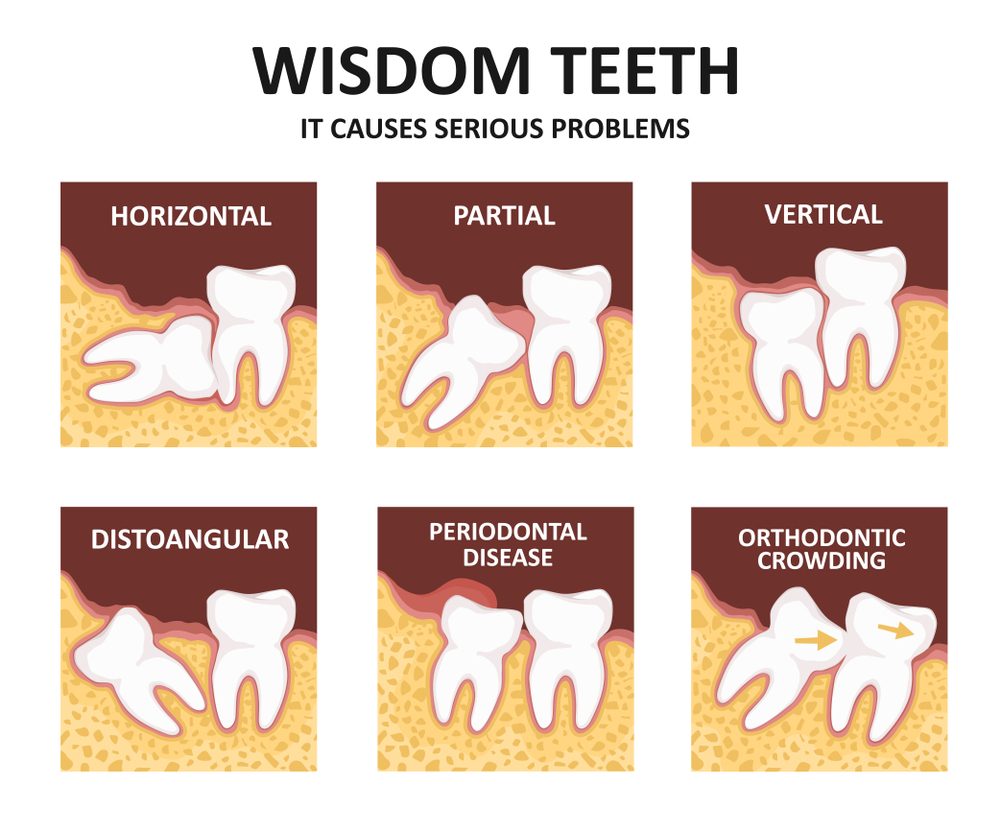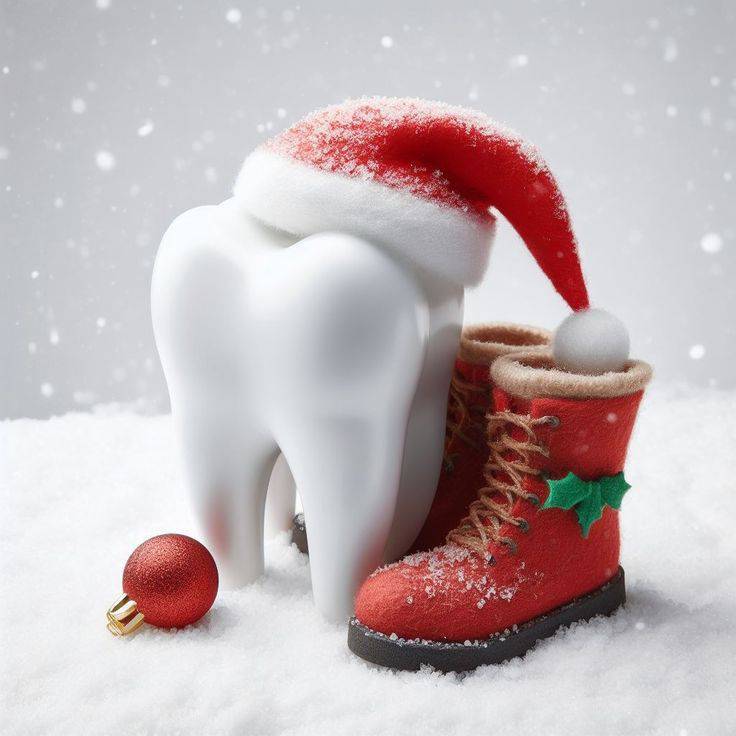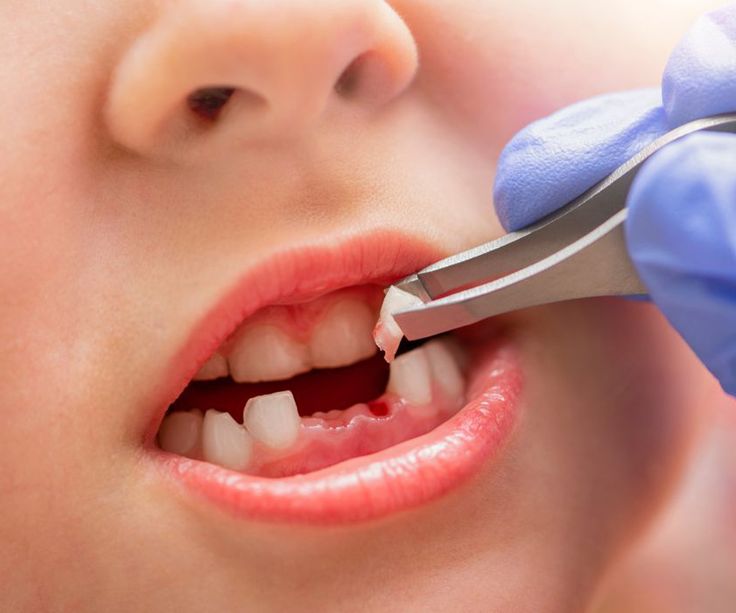Wisdom teeth, also known as third molars, are the last set of teeth to emerge, usually between ages 17 to 25. While some people have enough space in their jaw for these teeth to grow properly, many experience problems that require removal. Wisdom teeth, also known as third molars, are the last set of teeth to emerge, usually between ages 17 to 25. While some people have enough space in their jaw for these teeth to grow properly, many experience problems that require removal. Reasons for Wisdom Teeth Removal 1. Impacted Wisdom Teeth The most common reason for extraction. When the tooth does not fully emerge due to lack of space, it remains trapped (impacted) under the gum or in the jawbone. Types of impactions: Soft tissue impaction: The tooth is covered by gum tissue. Partial bony impaction: Part of the tooth is visible, but the rest is stuck in the jawbone. Complete bony impaction: The tooth is entirely buried in the jawbone. 2. Pain and Discomfort Impacted or improperly erupted wisdom teeth can cause persistent pain in the jaw, ear, or head. The pain may worsen when chewing or opening the mouth. 3. Crowding of Other Teeth Wisdom teeth can push against other teeth, causing misalignment or crowding. This is especially concerning for people who have undergone braces or Invisalign, as it can undo orthodontic work. . 5. Tooth Decay (Cavities) Wisdom teeth are located far back in the mouth, making them hard to clean properly. This increases the risk of plaque buildup, cavities, and gum infections. 6. Cysts and Tumors In rare cases, impacted wisdom teeth can lead to cysts (fluid-filled sacs) or tumors in the jawbone. These can damage adjacent teeth, nerves, and bone, requiring surgery. 7. Sinus Issues Upper wisdom teeth are close to the sinus cavities. When they grow in, they may put pressure on sinuses, causing pain, congestion, and sinus infections. Wisdom Teeth Removal Process at a Dental Clinic 1. Consultation and X-Ray The dentist takes an X-ray or 3D scan to check the position of the wisdom teeth. Based on the evaluation, they decide whether removal is necessary. 2. Anesthesia Local anesthesia: Numbs the area (patient remains awake). Sedation anesthesia: Patient is relaxed but semi-conscious. General anesthesia: Used for complex cases (patient is fully asleep). 3. Tooth Extraction Simple Extraction: If the tooth is fully erupted, it is removed like a regular tooth. Surgical Extraction: If the tooth is impacted, the dentist makes an incision in the gum, removes bone, and extracts the tooth in pieces. 4. Stitches & Recovery The area is stitched if needed, and gauze is placed to stop bleeding. Recovery takes a few days to a week, with swelling and mild discomfort .
Dental Veneer
A dental veneer is a layer of tooth-coloured material which is attached to and covers the surface of a tooth. To fit a veneer, the tooth will need a very small amount of enamel removed from its surface. This is usually completely pain free. A digital scan (yes, no more of the old-fashioned, uncomfortable moulds are taken) will be made of the tooth. The dentist will also record the colour that the new veneer will need to be to match the neighbouring teeth. This information will be sent to a dental laboratory who will make the veneer. Until the veneer has been made the tooth may be more sensitive to hot and cold. A temporary veneer is usually necessary. Veneers are used in a variety of situations:When there is tooth discoloration that cannot be cleaned awayWhen there is an abnormal structure or texture, including chipping, fractures, or wear (erosion) of the tooth To aid closure of spaces between the front teethTo create the illusion of straight teeth with the desired colour and shape when the front teeth are slightly crowdedTo camouflage front teeth that have multiple, shallow and unsightly fillingsThere are no strong reasons against veneering a tooth. However, certain factors increase their risk of failure, such as grinding of teeth, excessively worn teeth, very large fillings, unfavourable bite (occlusion), vomiting associated with bulimia and chronic alcoholism and acid regurgitation as in hiatus hernia. They may also be unsuitable if the teeth are very discoloured.
Our Dental Emergency Clinics
At our Dental office , we understand that dental emergencies can be distressing and require immediate attention. After a long day at work, you suddenly begin to experience a severe toothache. You are searching for a nearby dentist in Texas, but all of them are closed. At this hour? How are you going to find a solution for your tooth pain without treatment from a reputable dental clinic ? Tired of searching for “24 hour dental clinic near me?”Luckily, Our emergency dentists are seasoned, professional and dependable.At our Dental office , we understand that dental emergencies can be distressing and require immediate attention. Common Dental Emergencies Dental emergencies can strike unexpectedly, causing immense discomfort and potential risks if not addressed promptly. Some common dental emergencies include severe toothaches, broken teeth, knocked-out teeth, abscesses, and oral infections. Delaying treatment for these emergencies can lead to further complications, jeopardising your oral health. If you experience any of these emergencies, it is crucial to seek immediate dental care in Singapore to prevent worsening conditions and alleviate your pain effectively. Understanding Toothache Emergencies Toothaches are often indicators of underlying dental issues, such as tooth decay, dental infections, cracked teeth, or gum disease. Severe or persistent toothaches may be signs of a dental emergency that requires urgent attention.
What is a phobia?
Dentophobia is a type of specific phobia disorder. A specific situation (going to the dentist) leads to a fearful response. What is a phobia? Phobias are a kind of anxiety disorder. They lead to excessive fear of an event or situation that isn’t actually harmful. Dentophobia is a type of specific phobia disorder. A specific situation (going to the dentist) leads to a fearful response. Dentophobia is an extreme fear that’s out of proportion to the situation. People with dentophobia avoid seeing the dentist even when they’re in pain. This condition is so severe that it can lead to very poor dental health. These problems may affect a person’s relationships or job prospects, too. Severe fear of dental treatment involves feelings of distress, but these feelings aren’t as extreme as dentophobia. People with dental anxiety worry a lot about pain or stress at the dentist, but will likely still see their dentist for treatment, unlike those with dentophobia. What does a person with dentophobia fear? Anesthetic: People usually aren’t fearful of getting an anesthetic (numbing drug), but instead, fear the anesthetic not working. Some people fear side effects of the anesthetic, such as temporary numbness of their lips. Blood: Some people have a fear of blood (hemophobia). They may feel afraid or panicky about the possibility or actual presence of even minor bleeding that can happen during a dental procedure. Choking: People may fear gagging or choking when the dentist numbs their mouth. They may fear not being able to breathe or swallow. The dentist: People may associate negative feelings with their dentist. These feelings may be worse if they’ve had a bad experience with a dentist in the past. Feeling pain: Dental procedures fairly often involve a small amount of pain. And sometimes, the procedure or recovery does hurt. People who’re highly sensitive to pain may be more fearful of feeling discomfort during their dental treatment or as a result of it. Needles: People afraid of needles may fear the injections dentists use during dental procedures. Noise: Someone may fear the noise made by drills and dental instruments used by the dentist or dental hygienist. Smells: People may become anxious due to how the dentist’s office smells or the specific aromas that arise during dental treatment. How can I find out if my child has dental phobia? A constant fear of the dentist can be extremely upsetting for your child. If your child is very young, it may be difficult for them to verbalize what’s wrong. If severe fear of the dentist greatly impacts your child’s life, your child’s healthcare provider or dentist may recommend they visit a mental health professional. This healthcare provider can look at your child’s symptoms, offer a diagnosis and help you form a treatment plan.
Dealing with severe dental pain
Dealing with severe dental pain often requires a combination of at-home remedies and professional dental care. Here are some steps you can take: and any type of Dental Problem . Immediate Relief Over-the-Counter Painkillers Take an over-the-counter pain reliever like ibuprofen or acetaminophen as directed. Ibuprofen is especially effective as it also reduces inflammation. Cold Compress Apply a cold compress or ice pack to the outside of your cheek for 15-20 minutes to numb the area and reduce swelling. Saltwater Rinse Mix half a teaspoon of salt in a glass of warm water and use it as a mouth rinse. It can help reduce inflammation and disinfect the area. Clove Oil Apply a small amount of clove oil to the painful area using a cotton swab. Clove oil has natural analgesic and antibacterial properties. Avoid Trigger Foods Stay away from extremely hot, cold, or sugary foods and drinks that might aggravate the pain. Identify the Cause Dental pain can stem from various issues, such as: Tooth Decay or cavities Abscess (infection in the tooth or gum) Gum Disease Tooth Fracture Impacted Wisdom Teeth Teeth Grinding Professional Care See a Dentist Severe dental pain often requires professional intervention. Schedule an appointment with your dentist as soon as possible. Root Canal or Extraction If the pain is due to an infected or decayed tooth, you may need a root canal or, in extreme cases, tooth extraction. Dental Cleaning For pain caused by gum disease or plaque buildup, a professional cleaning can provide relief. Prevent Future Pain Brush your teeth twice daily with fluoride toothpaste. Floss regularly to clean between your teeth. Visit the dentist regularly for checkups and cleanings. Avoid smoking and maintain a healthy diet low in sugar. If the pain persists or worsens, or if you experience symptoms like fever, swelling, or difficulty swallowing, seek emergency dental care immediately. These could be signs of a serious infection.
Dental Braces can be highly beneficial .
Our Services Braces for Younger Generation: 1. Corrects Misaligned Teeth: Braces can correct crooked, overlapping, or spaced teeth, improving the overall appearance of the smile. 2. Improves Oral Health: Straight teeth are easier to clean, reducing the risk of tooth decay, gum disease, and other oral health issues. Boosts Confidence 3. : A straight, healthy smile can greatly enhance self-confidence and self-esteem, especially during the critical teenage years. 4. Prevents Future Problems: Braces can correct bite issues, such as overbites, underbites, or crossbites, which can lead to more severe problems if left untreated. 5. Enhances Overall Health: A healthy, aligned smile can improve digestion, speech, and overall well-being. Reduced Risk of Injury 6. Reduced Risk of Injury: Protruding teeth can be more prone to injury, and braces can help move them into a safer position. 7. Improved Chewing and Digestion: Properly aligned teeth can improve chewing and digestion, reducing the risk of digestive issues. Best Age for Dental Braces: The American Association of Orthodontists recommends that children have their first orthodontic evaluation by age Early Treatment (7-10 years old): For severe issues, such as crossbites or underbites. 2. Adolescent Treatment (11-14 years old): For most orthodontic issues, as the teeth and jaw are still developing. 3. Teenage Treatment (15-18 years old): For more complex issues or for those who missed earlier treatment.
Happy New Year To All of You
As we welcome 2025, we extend our warmest wishes to all our valued clients. May this year bring joy, prosperity, and endless reasons to smile. Happy New Year To All of You As we welcome 2025, we extend our warmest wishes to all our valued clients. May this year bring joy, prosperity, and endless reasons to smile. Your trust in us to care for your oral health means the world, and we are committed to continuing to provide you with the highest level of care and service. Together, let’s make this year not only happy but healthy—starting with your beautiful smile! A new year is the perfect time to focus on your dental health. Regular brushing, flossing, and check-ups play a vital role in keeping your teeth and gums healthy. Remember, good oral health is not just about a sparkling smile; it’s also essential for your overall well-being. Conditions like gum disease, cavities, and even oral infections can impact your general health if left untreated. By maintaining consistent dental care, you invest in a brighter, healthier future. Explore Collection New year Resolution Let’s make 2025 the year of confident, dazzling smiles. We’re here to support you every step of the way. From routine cleanings to advanced treatments, our team is dedicated to ensuring your smile remains as vibrant as ever. Don’t forget to schedule your bi-annual check-up—it’s the easiest resolution to keep for a healthier you. Let’s make 2025 the year of confident, dazzling smiles. Thank you for choosing us to be a part of your journey. Here’s to a fantastic year ahead! Call us at (806) 636-5555 ,Mail us at : brownfielddental@gmail.com or visit https://brownfielddentaltx.com/home to schedule your appointment. Find us at: 101 Seagraves Rd, Brownfield, TX 79316. Purchase Now
New year Resolution for Dental cavity
Let your smile sparkle brighter than the festive lights! and Make your dental health a priority as you prepare for the New Year. The Brownfield dentist in Brownfield is conveniently located near to the Brownfield Sport Complex and Coleman Park is the best option available for any type of Dental Problem . A great New Year’s resolution for preventing dental cavities could be: “Commit to excellent oral health care habits and make proactive choices to maintain cavity-free teeth throughout the year.” Let your smile sparkle brighter than the festive lights! and Make your dental health a priority as you prepare for the New Year. Here are some actionable steps to support this resolution: Brush Twice Daily: Use fluoride toothpaste and a soft-bristled toothbrush for at least two minutes, morning and night. Floss Regularly: Clean between your teeth daily to remove food particles and plaque. Use Interdental Brushes: For added effectiveness in cleaning between teeth. Reduce Sugar Intake: Limit sugary snacks and drinks that promote cavity formation. Stay Hydrated: Drink plenty of water, preferably fluoridated, to help wash away food particles and bacteria. Eat a Balanced Diet: Include foods rich in calcium and phosphorus for strong teeth. Regular Dental Check-ups: Visit your dentist every six months for professional cleaning and early detection of potential issues. Chew Sugar-Free Gum: Stimulate saliva production to protect against cavities. Use Mouthwash: Opt for one with fluoride to strengthen enamel and fight bacteria. Avoid Tobacco Products: These can lead to oral health issues, including cavities. Start small by incorporating one or two habits and build on them throughout the year! Call us at 281-672-7178, Mail us at : myteethdentaltx@gmail.com or visit myteethdentaltx.com to schedule your appointment. Find us at: 1199 blossom street Webstar, TX 77598.
Merry Christmas to All
This Christmas, let your smile sparkle brighter than the festive lights! and Make your dental health a priority as you prepare for the New Year. A healthy smile is always the best gift you can give yourself and your loved ones. Enjoy all your favorite holiday treats worry-free with strong, healthy teeth. Start the New Year with confidence and a radiant smile. Book your routine dental check-up before the year ends. Protect your teeth from holiday indulgences with our expert care. Teeth whitening services are available to make your smile shine in every photo. through this u can fix your smile . Teeth Whitening: One of the most common cosmetic dental procedures, teeth whitening aims to lighten teeth and remove stains and discoloration. This can be done in-office by a dentist or at home using whitening kits prescribed by a dentist. Dental Veneers: Veneers are thin, custom-made shells crafted from tooth-colored materials (usually porcelain or composite resin) designed to cover the front surface of teeth. They can improve the appearance of teeth that are discolored, misshapen, or unevenly spaced. Dental Implants: Implants are used to replace missing teeth. They are surgically placed into the jawbone and serve as a foundation for replacement teeth (crowns or bridges). Dental implants look and feel like natural teeth and can greatly enhance the appearance of a smile. Dental Bonding: Bonding involves applying a tooth-colored composite resin to repair teeth that are chipped, cracked, or discolored. It can also be used to close small gaps between teeth and improve the appearance of teeth that are misaligned. Preventive care today means fewer worries tomorrow—visit us for advice! Holiday stress? Relax knowing your dental health is in safe hands with us. A fresh start begins with a fresh, clean mouth. Let us help you maintain healthy gums and cavity-free teeth. Celebrate the holidays with the confidence of a dazzling smile. From all of us at [Your Dental Clinic Name], we wish you joy, health, and happiness. See you soon for a brighter, healthier smile— Happy Holidays and a Happy New Year from all of us 🎉 Call us at 281-672-7178, Mail us at : myteethdentaltx@gmail.com or visit myteethdentaltx.com to schedule your appointment. Find us at: 1199 blossom street Webstar, TX 77598.
Fear of the Dentist in children
Dental phobia in children can be challenging, but with gentle approaches and positive experiences, it can be overcome. Causes of Dental Phobia in Children: 1. Past traumatic experiences 2. Fear of pain or injections 3. Unfamiliar environment or equipment 4. Lack of control or understanding 5. Parental anxiety or fear So lets discuss what are the Signs of Dental Phobia in Children. Resistance to dental visits , Anxiety or crying during appointments , Refusal to open mouth or cooperate , Physical symptoms that is sweating, trembling . Additional Techniques: 1. Desensitization: Gradual exposure to dental environment 2. Relaxation techniques: Deep breathing, visualization 3. Distraction methods: Music, videos, or games 4. Topical anesthesia: Numbing gel or spray 5. Conscious sedation: Oral or inhalation sedation By implementing these strategies, you can help your child overcome dental phobia and develop a positive attitude towards oral health.









